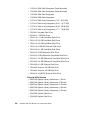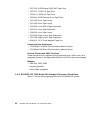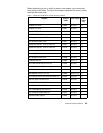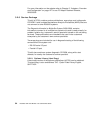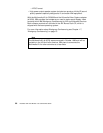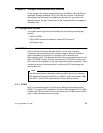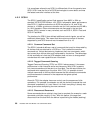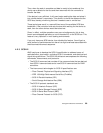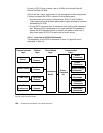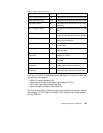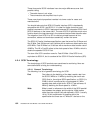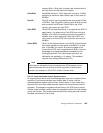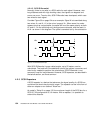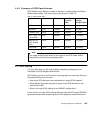98 RS/6000 43P 7043 Models 150 and 260 Handbook
It is sometimes referred to as SCSI-I to differentiate it from the generic term
SCSI. SCSI-I was the first of all SCSI technologies to come about and was
the fastest controller interface at the time.
4.2.2 SCSI-II
The SCSI-II specification gained final approval from ANSI in 1994 as
standard X3T9.2/375R Revision 10K. SCSI-II allowed far better performance
than SCSI-I. It defines extensions to SCSI that allow for 16- and 32-bit
devices, a 10 MB/s synchronous transfer rate for 8-bit transfers and 20 MB/s
for 16-bit transfers. Other enhancements are discussed in the text that
follows. SCSI-II comes in many varieties, such as SCSI-II, SCSI-II Fast and
SCSI-II Fast/Wide.
The interface for SCSI-II also defined additional control signals, as well as
additional data signals. This meant that the maximum number of devices
supported by one SCSI channel was increased from 8 to 16.
4.2.2.1 Common Command Set
The SCSI-II standard defines a set of commands that must be interpreted by
all devices that are attached to a SCSI bus. This is called the common
command set. Unique devices may implement their own commands, which
can be sent by a device driver and interpreted by the device. The advantage
of this architecture is that the SCSI adapter does not have to change when
new devices with new capabilities are introduced.
4.2.2.2 Tagged Command Queuing
Tagged Command Queuing (TCQ) is a SCSI-II enhancement. It increases
performance in disk-intensive server environments. With SCSI-I systems,
only two commands could be sent to a fixed disk. The disk would store one
command while operating on the other. With TCQ, it is possible to send
multiple commands to the hard disk because the disk stores the commands
and executes each command in the sequence that gives optimal
performance.
Also with TCQ, the adapter has more control over the sequence of disk
operations. For example, the adapter can tell the device to execute the next
command immediately, or it can instruct it to finish everything it already has
been given before completing the new command.
4.2.2.3 Disconnect/Reconnect
Some commands take a relatively long time to complete (for example, a seek
command could take roughly 10 ms). With this feature, the target can
disconnect from the bus while the device is positioning the heads (seeking).



